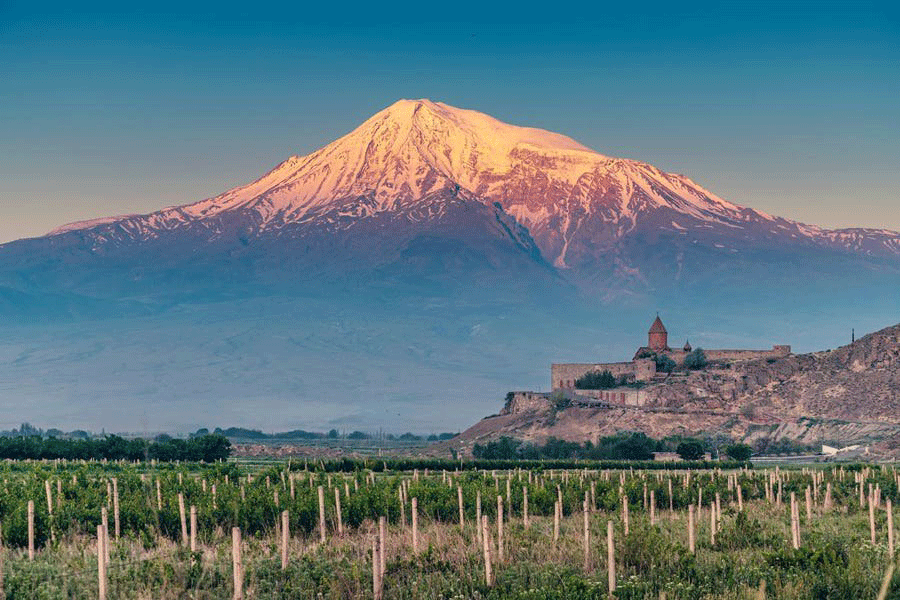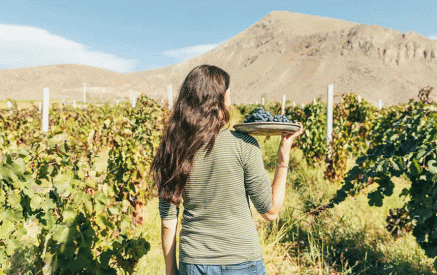Exciting news as Armenia’s thriving wine industry has caught the attention of Forbes. “I was impressed with the overall quality of the wines and the passion that local producers put into them,” noted author Liza Zimmerman in her recent article “Exploring Armenian Wine.”
This ancient winemaking country was never on my radar. Was it because few of the wines have historically been available in the U.S. or because the bulk of indigenous wine grapes are not familiar to us in the U.S.? It certainly also doesn’t help that the country has been buffeted by war on many sides for much of its long wine-making history.
The wine grapes from the Caucasus, primarily Armenia and Georgia, never made the leap to Western Europe. As a result, most U.S. and European consumers don’t know much about them or how to pronounce them.
However, on my first trip to Armenia, I was impressed with the overall quality of the wines and the passion that local producers put into them. Sadly, very few of them are present on the U.S. market. Storica, the Boston-based importer who led this trip, is changing that up. As are international winemakers like Paul Hobbs, while collaborating on winemaking endeavors there; and the fact that the latest SOMM film, part of a series of four, is based on wine production in Armenia. The film was just released in the U.S. and I recently reviewed it.
Read also
This was also a particularly moving trip, which most wine country trips aren’t always, given the political situation in the country. Armenia has long had a tenuous relationship with neighboring Azerjaban and it is not getting any better. So, I felt that the producers really poured their heart and soul into hosting us there in more ways than one. I wonder how many American producers might have canceled tastings and winery visits if their homeland felt imperiled?
Anyone interested in understanding Armenia should look at the country’s deep history of winemaking. The Areni-1Cave, the oldest known winery dating from over 6,000 years ago shows evidence of wine consumption dating back to 6000 B.C. The country’s primary Christian population has also ensured that wine has long been made for use in the church and at home.
There is also a deep-seated tradition of home winemaking all around the country—much like you see in Italy or any southern European country—which is testament to how much countryfolk like crafting what they grow in their yards in into a great dinner pairing. This is something we observed in abundance on this trip, at places like Yeganyan’s Gastroyard, an interactive culinary center where visitors can make lavash bread and traditional sweets (and enjoy them with BBQ at dinner right afterwards).
The wine industry here is fueled by stalwarts who are reinventing the wheel, from within, and those who have come back from many years abroad. Vahe Keushguerian, the charming protagonist of SOMM4, vividly expresses why he headed home after years of living in Italy and the U.S. Paul Hobbs, the legendary California winemaker, who has put some new styles of Argentine Malbec on the map also became interested in producing wine this country in high-elevation vineyards with tons of sunshine. Hobbs has been making wine under the Yacoubian-Hobbs label since 2014 and he has been producing wine in Sonoma since the early 2000s.
Paul Hobbs is a well-known California winemaker, who has also had a long career swooping in and collaborating with producers in a number of countries including Argentina as well as Cahors in the South of France as well as his latest venture in Armenia with Yacoubian-Hobbs label over the past decade.
He chatted with me briefly about how his Armenian collaboration started. He notes that he was, “approached by two Armenian brothers living in Los Angeles who liked my California wines and knew of my history of helping to internationalize the Argentine wine industry. They convinced me they were serious about doing something significant to help elevate the image of the wines in their home country and they wanted my help,” he shares.
“Early events in my career had catapulted Armenia in my imagination. …When enough seemingly disparate things align it can feel like being called. That’s what got me there. Once there of course it comes down to just one thing—the terroir. If yes, you explore deeper. If not, you go home.” He adds, which makes a lot of sense to me, that he is also working with a number of well-known European varietals “to understand how that response to the terroir from this part of the world.”
The Basics
Armenia has long been cut off from the international wine-producing world as it was part of the Soviet Union until 1991. As the Soviets did, with other neighboring countries like Moldova, the Armenians were told to focus on “Cognac,” and other fortified wines. This clearly is not even Cognac as it is made outside the French region of the same name.
Areni is the country’s flagship red grape. What is more many vineyards here are phylloxera-free and have been planted on their own roots: which is something you don’t see much in Europe except for small regions like Colares in Portugal.
A few of my favorites tasted on this trip included Noa Arkuri Noah Of Areni 2022, which had lovely stone fruit notes and flowers. The rosé sparkler from Keush is delightfully over the top with a fragrant aroma and hints of berries on the palate. It’s made by Keushguerian. Van Ardi is another notable producer with a nice estate. The winery’s 2022 Kangun—an indigenous white grape—had rich stone fruit notes, good acidity and notes of citrus and apricot skin on the finish.
Some of these unique varietals are picking up traction in U.S. restaurants, particularly where there is a large Armenian community in places like Glendale, in Los Angeles. Rosalie Tcholakian, an owner of the two-location Carousel restaurant shares that her dinners are growing more interested in Armenian wines. She adds that many non-Armenia customers are also showing up, so “Armenia is definitely on the map!”
Liza B. Zimmerman
























































